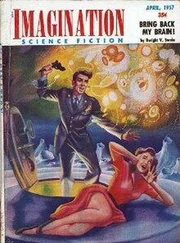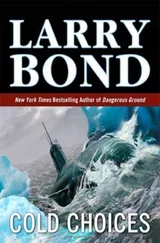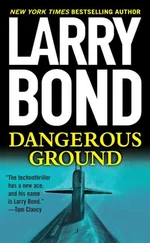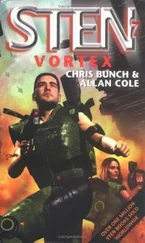STAGING AREA ONE, NEAR BRAKWATER, NAMBIA
Staging Area One lay nestled in a broad valley between barren, boulder-strewn hills. Empty cornfields stretched to either side, abandoned by their owners under orders from Cuban security troops. Only a few scrub trees dotted the low hills, each blasted by the heat, and shade was something to think about, not to find. The main highway connecting
Windhoek with Angola ran right past the camp.
A barbed-wire fence two meters high encircled the entire compound, pierced only by one gate where it crossed a side road connecting with the highway. Rows of tents and vehicles were visible beyond the fence.
Col. Josd Suarez, chief of staff of the Cuban Expeditionary Force, strode slowly through the staging area trailed by an array of nervous officers.
He was so tired that he almost had to force himself to take each new step.
He’d been up since five, with only a few hours’ sleep the
night before. Managing the Namibian campaign in Vega’s absence, even while holding along a relatively static front, was more than exhausting.
Battlefield and intelligence reports. Staff conferences. Decision after decision. And inspection tours such as this one. They all drained a man of energy continuously-giving him no chance for any real rest.
Suarez frowned. If this was how he felt after just a week in temporary command, he didn’t see how Vega managed his own, much greater, responsibilities. Where did the older man find such a seemingly inexhaustible source of personal energy? He shook his head, realizing he’d probably never find out. The general, like most good commanders, kept a large part of his inner self unknown and unknowable-even to his closest friends and subordinates.
In the meantime Suarez reminded himself, he had his own work to do. He straightened up, concentrating on his inspection.
The equipment park sprawled over several acres. Row after row of long, angular sand-colored shapes sat motionless, their appearance deceptively real even at this distance. Suarez actually smiled, his mood lightened by seeing such a successful ploy.
He walked closer to inspect what appeared to be a BTR60 armored personnel carrier. It had the right shape and dimensions, but a rap of his knuckles revealed a fiberglass shell instead of an armored hull. Though the decoy lacked brackets and hatches and vision blocks, from a hundred meters away it was arguably a BTR-60.
Its eight wheels were actually painted cement cylinders, designed to keep the rest of the decoy from blowing away in the valley’s ever-present wind.
Suarez continued, striding past rows of fiberglass APCs, T-62 tanks, artillery pieces, and even trucks, all made of fiberglass in local factories. Brought in at night in threes and fours, American intelligence satellites and South African reconnaissance planes recorded what appeared to be a slow and steady buildup of troops and armor just north of Windhoek.
Six other phony staging areas, along with two real ones, cluttered the mountain valleys around Namibia’s capital. Security for all of them was as tight as he could make it with the limited resources at his disposal. The reason for that was obvious. If the South
Africans ever learned that Cuba’s buildup inside Namibia was one part reality to three parts charade, they’d start asking themselves hard questions about where all those tanks, troops, and guns really were.
And that would be disastrous.
Suarez hoped his political masters would make up their minds soon. Every day they delayed gave their enemies more time to realize just how badly they’d been fooled.
NATIONAL SECURITY COMMAND BUNKER, OUTSIDE HAVANA, CUBA
DC1 Intelligence Estimate Southern Africa #846 (Revised)
Most Secret
Summary: The open rebellion in South Africa’s own armed forces, combined with the reactionary government’s ongoing and inevitable political disintegration, offers Cuba and its socialist allies a correlation of forces more favorable than at any other time in recent history. In addition, all available information confirms the complete success of our efforts to deceive the enemy’s military intelligence apparatus…. Fidel Castro flipped from page to page, skimming rapidly through the report prepared by his spy service, squinting in the harsh glare of overhead fluorescent lights. Its conclusions mirrored his own deeply held beliefs.
Pretoria’s white regime was on the verge of total collapse. Now was the time to strike and to strike hard.
At irregular intervals.” he glanced up at the row of clocks set high on one of the bunker’s reinforced-concrete walls.
One showed the local time. Another the hour in Moscow. A third had been reset to show the correct time in southern Africa.
Behind each clock’s clear glass face, hands marked the passage of yet another hour. And still nothing! The Teletype machine linked to the
Soviet Union remained obstinately silent. The staff officers grouped around a tabletop display of Namibia and South Africa stood idle.
Castro scowled darkly and watched with secret amusement as his uniformed generals and sober-suited bureaucrats looked quickly away—frightened that Cuba’s absolute ruler might be tempted to vent his frustration and anger on them. His amusement faded as more minutes dragged slowly past.
The long delay irked him. Castro’s lips thinned. To be kept waiting like an impoverished beggar was bad enough. To be slapped down like one would be even worse.
He bit down hard on the unlit cigar stuffed into one corner of his mouth.
Those gutless fools inside the Kremlin’s redbrick walls had already all but utterly renounced Marxism Leninism as a scientific creed. Would they also throw away a grand opportunity to restore their own economic and military power? It seemed unthinkable. Of course, much that had happened over the past several years had once seemed unthinkable.
The Teletype chattered suddenly, spitting out line after line of a message encoded in Moscow microseconds before and now being decoded with the aid of computer technologies “borrowed” from the Americans. Castro controlled the urge to stand over the machine reading the Soviet reply as it emerged. That would be undignified.
Instead, he sat waiting with studied patience as the flimsy sheet of paper worked its way round the crowded bunker, quickly climbing the ladder of seniority until it landed in front of him. Cuba’s leader raced through the message once, then read it a second time more carefully.
A muffled buzz of avid conversation and eager speculation died away-leaving only the faint hum of the bunker’s ventilation system.
At last Castro looked up, his dark, hooded eyes seeking out the officer responsible for military communications.
“You have General
Vega’s headquarters on standby?”
“Yes, Comrade President.”
“Good.” Castro pulled a pad of paper closer, shifted his cigar from one side of his mouth to the other, and began writing. He finished in thirty seconds, ripped the top sheet off his pad, and held it out between a thick thumb and forefinger.
“Then encode that signal and send it immediately.”
After weeks of procrastination and uncertainty, Moscow had finally given
Vega’s planned offensive the green light. South Africa’s white capitalists were going to learn about war the hard way.
HEADQUARTERS, CUBAN EXPEDITIONARY FORCE,
RUTENGA, IN SOUTHERN ZIMBABWE
Dozens of officers were gathered in the sweltering heat beneath the central headquarters tent. They represented a dozen different service branches-air and land operations, supply, intelligence, political instruction, combat engineering, and others. Most of the men were Cuban, though a scattering of unfamiliar uniforms signaled the presence of a few token Libyan, Zimbabwean, and ANC commanders. Mesh screens kept most of
Читать дальше












